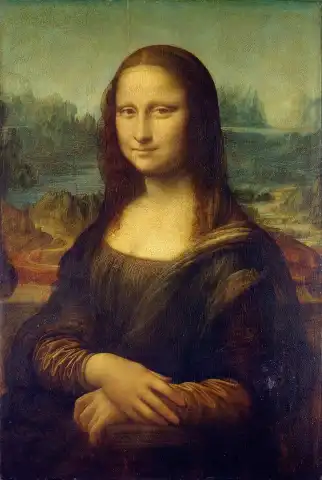

Hand painted reproductions of Suzuki Harunobu
Suzuki Harunobu: A Master of Ukiyo-e and the Beauty of Edo Period Japan
Early Life and Education
Suzuki Harunobu (1725–1770) was a pioneering Japanese ukiyo-e (woodblock print) artist during the Edo period, whose works played a significant role in the development of color woodblock printing. Although little is known about his early life, it is believed that Harunobu was born in the early 18th century in the merchant district of Edo (modern Tokyo), Japan. His formal training is not well documented, but he was likely influenced by traditional Japanese painting styles, particularly those of the Kano school, and learned woodblock printing under the tutelage of established artists of the time.
Harunobu’s career flourished during the vibrant Edo period, a time when the urban culture of Edo (modern Tokyo) was at its peak. The rise of a prosperous merchant class, along with the flourishing of theater, kabuki, and the pursuit of pleasure in the "floating world" (ukiyo), created an ideal environment for the ukiyo-e genre. Harunobu’s unique contribution to this art form was his refinement and innovation of the color woodblock printing process, which became the hallmark of his work.
Artistic Development and Style
Suzuki Harunobu is best known for his mastery of color woodblock prints, a technique that revolutionized the ukiyo-e genre during the mid-18th century. While earlier ukiyo-e prints were typically monochromatic, Harunobu is credited with introducing the use of multiple colors in a single print, achieving stunning, full-color compositions. This development was not only a technical achievement but also marked a shift toward more sophisticated and elegant depictions of beauty.
Harunobu’s works often featured beautiful women, or "bijin-ga," portrayed with delicate facial expressions and refined clothing. His figures were graceful and elegant, and his compositions reflected an idealized beauty that resonated with the tastes of the Edo elite. He also frequently depicted the pleasures of daily life in Edo, such as leisure activities, kabuki theater scenes, and seasonal landscapes. His ability to evoke a sense of movement and emotion in his prints set him apart from other artists of the period.
The artist’s use of soft, pastel colors, as well as his emphasis on elegant linework, made his prints appear light, airy, and dreamlike. Harunobu’s works are filled with intricate patterns and ornamental details, showcasing his meticulous attention to detail. His color palette often included soft pinks, blues, and yellows, which conveyed a sense of tranquility and refinement. He also experimented with textures, using different types of paper and printing methods to achieve varying effects.
Themes and Significance
Suzuki Harunobu’s work was deeply intertwined with the culture of the Edo period, which was marked by the pursuit of pleasure and refinement. His color woodblock prints celebrated the beauty of the "floating world," or ukiyo, with subjects such as courtesans, kabuki actors, and beautiful women in stylish kimono. These subjects were not only popular in the artistic and entertainment spheres but also embodied the complex social hierarchies of the time.
Harunobu’s depictions of beautiful women were particularly significant, as they provided an idealized representation of femininity that reflected the tastes of the urban elite. His prints often captured women in moments of grace, performing daily activities such as applying makeup or attending tea ceremonies, which were seen as moments of beauty and refinement. The beauty of the human form and the elegance of fashion were central themes in his work, resonating with a growing fascination for beauty and luxury within Edo society.
Additionally, Harunobu’s engagement with the natural world was evident in many of his prints. He often included floral motifs, birds, and other natural elements as part of his compositions, blending these themes seamlessly with his depictions of people. His work thus reflects a harmonious connection between humanity and nature, celebrating both beauty and elegance.
Achievements and Influence
Suzuki Harunobu’s innovations in the ukiyo-e genre helped solidify his place as one of the most important printmakers of the 18th century. He was among the first artists to master full-color woodblock printing, a groundbreaking achievement that elevated ukiyo-e prints to new heights of artistic sophistication. His work became highly influential not only in Japan but also internationally, where it played a significant role in the development of Western appreciation for Japanese art during the 19th century.
Harunobu’s impact extended beyond the aesthetic realm; his prints also reflected the changing dynamics of Edo society. His depictions of elegant women, kabuki actors, and daily life contributed to the rise of mass consumer culture, particularly among the merchant class. The affordability and accessibility of ukiyo-e prints allowed his work to reach a broad audience, and his popularity among collectors and art enthusiasts continues to this day.
Despite his relatively short life, Harunobu’s artistic legacy is immense. He inspired a generation of ukiyo-e artists, including notable figures like Katsushika Hokusai and Utagawa Hiroshige, who continued to push the boundaries of the woodblock print genre in the years that followed.
Legacy
Suzuki Harunobu’s legacy as a master of ukiyo-e and color woodblock prints continues to be celebrated by art collectors and enthusiasts around the world. His ability to combine technical innovation with a profound sense of beauty has cemented his place as one of the most important figures in the history of Japanese art. His works are housed in major museums, including the British Museum and the Tokyo National Museum, where they are revered for their elegance, sophistication, and artistic achievements.
His influence can also be seen in the global appreciation of Japanese art and design, particularly in the West, where his prints were admired by collectors and art movements such as Japonism in the late 19th and early 20th centuries. Today, Harunobu’s works continue to captivate audiences with their timeless beauty and artistic mastery.
Where to Find Reproductions of Suzuki Harunobu’s Art
For those wishing to bring the beauty and elegance of Suzuki Harunobu’s prints into their homes, Painting On Demand (POD) offers high-quality reproductions of his most iconic works. These prints allow art lovers to experience the delicate colors, intricate details, and serene beauty of Harunobu’s masterpieces, bringing the timeless art of ukiyo-e into the modern world.
Imagine owning an original-style painting by one of the greatest artists in history. At POD, we offer you the chance to make this dream a reality. Each canvas is faithfully reproduced down to the smallest detail, allowing you to experience the beauty of the artist’s vision in your own home.
Our reproductions are crafted by experienced painters using the finest materials and time-honored methods. We are committed to delivering works of exceptional quality that will inspire and bring joy to your family for generations to come.




